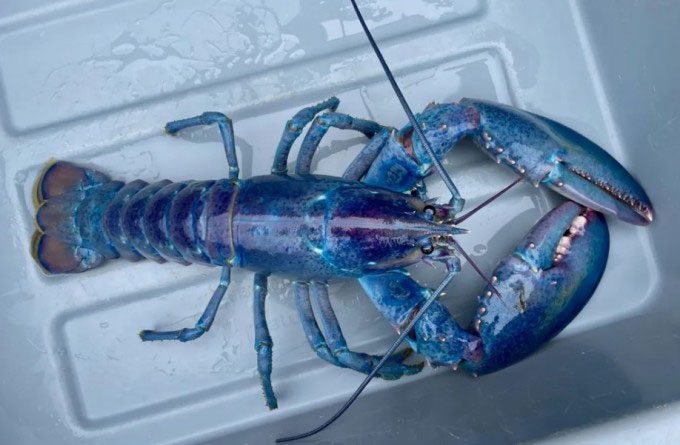The owner of Atlantic Lobster Company, Joseph Kramer, inspected over 20 traps off the coast of New Castle, New Hampshire, and was shocked to find a vividly colored lobster in the last trap.
Initially, Kramer thought he had caught a blue lobster (with a ratio of 1 in 2 million), but he quickly realized that the lobster in his hands was even rarer: a “cotton candy” lobster, with only one in 100 million existing.

The cotton candy lobster caught by Joseph Kramer. (Photo: Coastal Science Center).
Since the animal met local catch standards, Kramer brought it to the Coastal Science Center in Rye. There, marine biologist Sam Rutka confirmed that it was indeed a healthy, male cotton candy lobster, stunningly adorned with lavender, purple, and pink hues. In over 10 years of work, Rutka had only encountered 15 such lobsters.
The coloration of the lobster has nothing to do with cotton candy but is actually due to a genetic mutation. The nickname comes from the combination of pink and purple colors against a blue background that resembles cotton candy on its shell.
Lobsters have multiple layers of carotenoid pigments in red, yellow, and blue, giving them their brown shell color. However, when genetic mutations cause pigments to express poorly or excessively, the result is some lobsters with vibrant colors. In addition to blue and cotton candy lobsters, researchers have also documented red lobsters, two-colored lobsters, and albino lobsters at rates of 1 in 10, 1 in 50 million, and 1 in 100 million, respectively.
Although the unique coloration of the cotton candy lobster is primarily determined by DNA, it is not the only factor. Lobsters can have darker or lighter colors depending on their diet, similar to how flamingos are pink due to the shrimp they consume, according to biologist Anita Kim, who has worked at the New England Aquarium. However, the rare coloration makes cotton candy lobsters at a disadvantage in the wild, making it harder for them to camouflage and easier for predators to spot. “That increases the rarity of the discovery,” Rutka said.
Currently, the lobster discovered by Kramer is being cared for at the Coastal Science Center. The facility also houses an orange lobster and several blue lobsters.





















































